 The square of the sum of two numbers is equal to the square of the first, plus twice the product of the first and the second, plus the square of the second. The square of the sum of two numbers is equal to the square of the first, plus twice the product of the first and the second, plus the square of the second.  Advanced Algebra - Page 45by Arthur Schultze - 1906 - 562 pagesFull view Advanced Algebra - Page 45by Arthur Schultze - 1906 - 562 pagesFull view - About this book
 | Elias Loomis - Algebra - 1846 - 376 pages
...that they should be carefully committed to memory. THEOREM I. The square of the sum of two quantities is equal to the square of the first, plus twice the product j)f the first by the second, plus the square of the second. Thus if we multiply a + b By a + b a2 -\-... | |
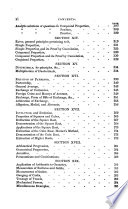 | James Bates Thomson - Arithmetic - 1847 - 426 pages
...of the two parts, viz: 20X3+20X3=120, added to the square of the last part, viz : 3X3=9. Hence, 562. The square of the sum of two numbers is equal to the square of the first part, added to twice the product of the two parts, and the square of the last part. OBS. 1. The product... | |
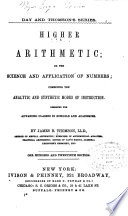 | James Bates Thomson - Arithmetic - 1847 - 432 pages
...of the two parts, viz: 20X3+20X3=120, added to the square of the last part, viz : 3X3=9. Hence, 562. The square of the sum of two numbers is equal to the square of the first part, added to twice the product of the two parts, and the square of the last part. OBS. 1. The product... | |
 | James Bates Thomson - Arithmetic - 1848 - 434 pages
...three figures in the given number, there must be two figures in the root ; (Art. 562. Obs. '2 ;) but the square of the sum of two numbers, is equal to the square of the first part added to twice the product of the two parts and the square of the last part; it follows therefore... | |
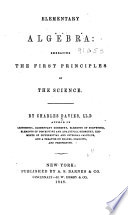 | Charles Davies - Algebra - 1848 - 302 pages
...binomial (a-\-b). We have, from known principles, That is, the square of the sum of two quantities is equal to the square of the first, plus twice the product of the first by the second, plus the square of the second. 1. Form the square of 2a+3b. We have from the rule (2a... | |
 | John Bonnycastle - Geometry - 1848 - 320 pages
...its circumference to be 24880 miles ? Ans. 7919.53666 miles, nearly. Extraction of the Square Root. The square of the sum of two numbers is equal to the squares of the numbers with twice their product. Thus, the square of 24 is equal to the squares of... | |
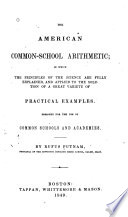 | Rufus Putnam - Arithmetic - 1849 - 402 pages
...(3 + 2)*; (5 + 3)*. From these examples and illustrations, wo see that the square of the sum of any two numbers is equal to the square of the first, plus twice the product of the first into the second, plus the square of the second. 5. Find by this method the square of4-f-3; 5-f-8; lf-4;... | |
 | George Roberts Perkins - Arithmetic - 1849 - 346 pages
...540 + 9. 482=(40+8)2=402+2 x 40.8+82= 1600+640+64. From the above, we draw the following property : The square of the sum of two numbers is equal to the square of the first number, plus twice the product of the first number into the second, plus the square of the second.... | |
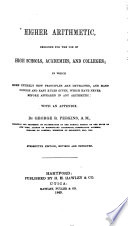 | George Roberts Perkins - Arithmetic - 1849 - 356 pages
...sum of any two numbers, as 6 + 8, is equal to 63 +2x6.8 + 8", which result may be thus expressed : The square of the sum of two numbers is equal to the square of the first number, plus twice the product of the first number into the second, plus the square of the second.... | |
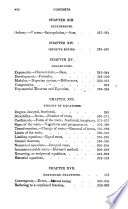 | Stephen Chase - Algebra - 1849 - 348 pages
...have (a+6) 2 = (a+J) (a+J) = a2+2ab+b2. That is, THEOREM I. The square of the sum of two numbers i> equal to the square of the first, plus twice the product of tlte Jirst by the second, plus the square of the second. Or, more briefly, The square of the sum of... | |
| |